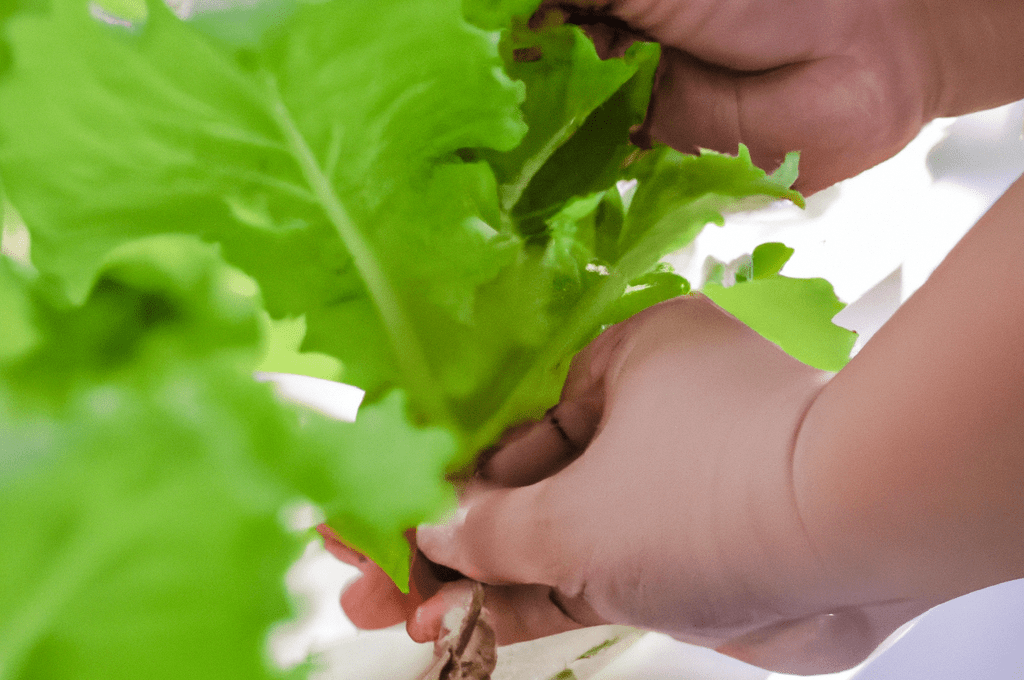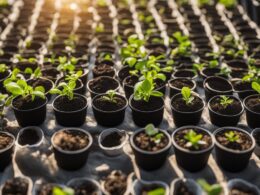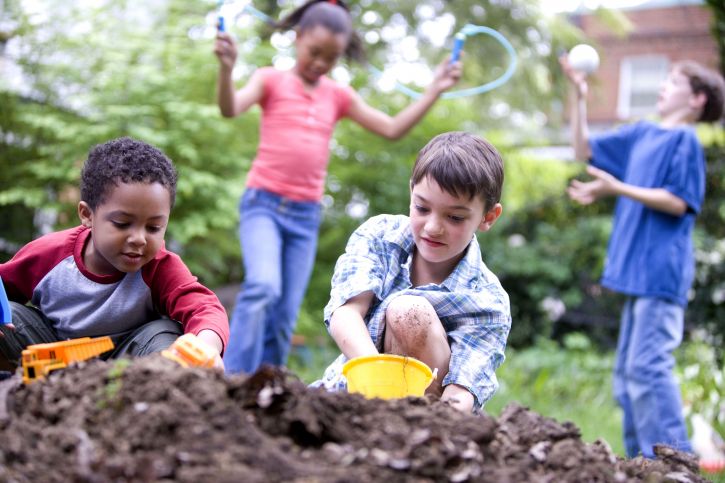Are you ready to take your hydroponic plants to the next level? Transplanting your plants from water to soil can be a bit nerve-wracking, but with the right preparation and care, you can successfully transition your plants without a hitch.
Transplant shock is a real concern, but by following a few simple steps, you can avoid this and ensure your plants thrive in their new environment.
In this article, we will guide you through the process of transplanting hydroponic plants to soil. We’ll cover everything from preparation to care and maintenance, and even provide expert advice to help you navigate any challenges along the way.
Whether you’re new to gardening or a seasoned pro, this article will give you the tools you need to safely and successfully transplant your hydroponic plants. So, let’s get started!
Quick Summary
- Lowering water access to hydroponic plants before transplanting helps roots grow longer and toughen up.
- Using a pot for the transition phase before planting in the garden is recommended.
- Trimming back some leaves and stems of transplants can lessen plant stress during soil transition.
- Starting seeds hydroponically and transplanting to soil is a great way to expand your garden and avoid soil-borne diseases.
Preparing for Transplant
Before you begin transplanting your hydroponic plants to soil, it’s important to prepare them for the transition.
One key step is to lower their water access a few days prior to transplanting. This helps their roots grow longer and tougher, making them better able to withstand the shock of being moved from water to soil.
To do this, gradually reduce the amount of water you give your plants over a period of 2-3 days before transplanting. This will encourage the roots to reach further in search of moisture, making them stronger and more resilient.
Additionally, using root growth accelerators, like mycorrhiza, can help promote healthy root development and improve overall plant growth.
By taking these steps, you can ensure that your hydroponic plants are prepared for the move to soil and will have the best chance of thriving in their new environment.
Transplanting Process
To prepare for the transition, you should lower the amount of water the roots have access to. This can be done by gradually reducing the frequency of watering or by decreasing the water level in the hydroponic system. This will encourage the roots to grow longer and tougher, preparing them for the shock of being transplanted into soil.
When transplanting, it’s important to handle the delicate hydroponic plants with care. Use a pot that is four to six inches in diameter and fill it with loose potting soil or a soil-free peat mix. Before placing the transplant into the pot, make sure to trim back some of the leaves and stems to lessen plant stress. Then, quickly place the root ball into the hole and sprinkle soil lightly to fill the void over the roots. After transplanting, mist the soil daily for the first week to keep the roots moist and slowly cut back watering until only watering once a week. By taking these steps, you can successfully transplant your hydroponic plants to soil and enjoy the benefits of both hydroponic gardening and soil health.
| Soil Health | Hydroponic Gardening |
|---|---|
| Benefits from healthy soil include better nutrient absorption and water retention. | Hydroponic gardening offers control over nutrient intake and water usage. |
| Soil can be affected by pests and diseases. | Hydroponic gardening decreases the risk of soil-borne diseases. |
| Soil requires maintenance for optimal plant growth. | Hydroponic gardening allows for year-round growing and less maintenance. |
| Different types of soil can affect plant growth. | Hydroponic gardening allows for consistent growing conditions. |
| Soil can be improved through composting and other methods. | Hydroponic gardening can be improved through adjusting nutrient levels and pH. |
Care and Maintenance
Maintaining the health of your transplanted seedlings requires careful monitoring for signs of wilting or drooping, which can indicate a lack of moisture in their new soil environment. To avoid this issue, it’s important to establish a consistent watering routine for your plants.
Start by misting the soil of your transplanted seedlings immediately after planting and adding fertilizer to the misting water to help give them a boost. Then, mist the pots daily for the first week to keep the roots moist and gradually cut back on watering until you’re only watering once a week. Remember, wind and sun can quickly dry out soil outdoors, so keep a close eye on your plants and be sure to water them whenever needed.
In addition to proper watering techniques, it’s also important to provide your transplanted seedlings with the right soil nutrition. Consider adding mycorrhiza to each hole when transplanting to benefit plant growth.
You can also use a loose potting soil or soil-free peat mix to fill your pots, which will give your plants the nutrients they need to thrive. With careful attention to watering and soil nutrition, your transplanted hydroponic plants will be able to adapt to their new soil environment and grow strong and healthy.
Can I Use Sugar Water to Boost the Growth of Hydroponic Plants During Transplanting?
Using sugar water to boost the growth of hydroponic plants during transplanting has been a subject of interest. However, studies suggest that sugar water’s effect on plant growth may not be as beneficial as once thought. While it may provide an initial energy source, excessive amounts can harm root development and overall plant health. It is advisable to research alternative methods for optimal growth.
Benefits of Transplanting
Expanding your garden through the use of transplants can be a great way to increase your plant variety and yield. Transplanting hydroponic plants to soil is a perfect example of this. With careful attention, you can successfully move your water-grown plants to soil-filled containers, giving them access to new nutrients and room to grow. This process is not only beneficial for your plants, but it can also be a fun and rewarding experience for you as a gardener.
Many success stories have come from the process of transplanting hydroponic plants to soil. By taking the time to transition your plants properly, you can watch them thrive and produce bountiful harvests.
Additionally, expanding your garden through transplanting can provide you with a wider range of plants to enjoy and experiment with. Whether you’re a seasoned gardener or just starting out, there are many benefits to exploring the world of transplanting and watching your garden grow.
Expert Advice
Get expert advice for successfully moving your plants from a water-based growing system to a soil-filled container. Avoid common mistakes and troubleshoot any issues you may encounter during the transition process.
One of the most important things to keep in mind is to not clip too much of the plant during the transplanting process. Only trim up to 1/3 of the leaves to avoid shock.
Additionally, make sure to mist the soil daily for the first week to keep the roots moist and add fertilizer to the misting water to help the plants along.
Another common mistake is overwatering the plant in its new soil-filled container. Slowly cut back watering until you are only watering once a week.
Lastly, be sure to monitor the soil moisture and keep the plant in an area that receives more light to ensure healthy growth. With these tips, you can successfully transplant your hydroponic plants to a soil-filled container.
Frequently Asked Questions
What are the best hydroponic plants to transplant to soil?
When transplanting hydroponic plants to soil, choose hardy varieties like lettuce, herbs, and leafy greens. Follow tips for successful transplanting, including using a pot for transition and monitoring soil moisture. Benefits of hydroponic gardening include space-saving and soil-free growing.
Can hydroponic plants be transplanted directly into the garden without using a pot?
Direct garden transplanting of hydroponic plants without a pot is possible, but risky. Benefits of hydroponic gardening include soil-free, mess-free growing. However, using a pot for transplanting is recommended to avoid transplant shock and ensure successful growth.
How long should the transition phase in a pot last before planting in the garden?
To ensure a successful transition from hydroponics to soil, the importance of acclimation cannot be overstated. Start plants in hydroponics before transplanting to reap benefits of stronger roots. The transition phase should last at least a week before planting in the garden.
Are there any specific soil types to avoid when transplanting hydroponic plants to soil?
When transplanting hydroponic plants to soil, avoid using soil that may be contaminated with potential soil-borne diseases. Stick to sterile soil-free mixes or potting soil. Be cautious and ensure safety.
How can you tell if a hydroponic plant is ready to be transplanted to soil?
To tell if a hydroponic plant is ready to be transplanted to soil, look for signs of healthy roots, such as white and firm roots. Benefits of transitioning hydroponic plants to soil include expanding your garden and avoiding soil-borne diseases.









